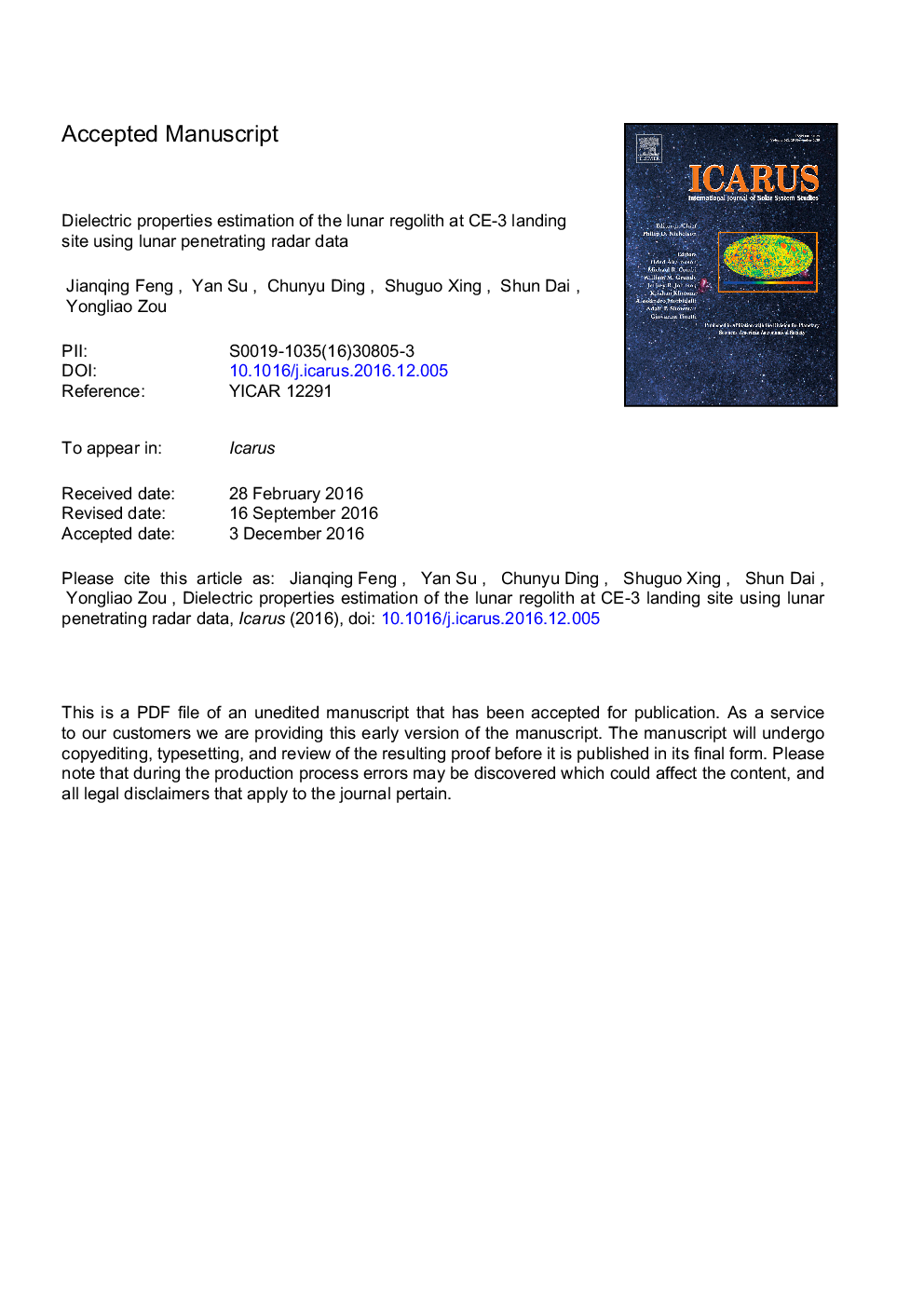| Article ID | Journal | Published Year | Pages | File Type |
|---|---|---|---|---|
| 5487154 | Icarus | 2017 | 20 Pages |
Abstract
The second channel (CH2) of the Lunar Penetrating Radar (LPR) carried on the Chang'e-3 (CE-3) Yutu Rover was used to determine the thickness and structure of the lunar regolith. Accurately revealing the true structure beneath the surface requires knowledge of the dielectric permittivity of the regolith, which allows one to properly apply migration to the radar image. In contrast to simple assumptions in previous studies, this paper takes account of heterogeneity of the regolith and derives regolith's permittivity distribution laterally and vertically by a method widely used in data processing of terrestrial Ground Penetrating Radar (GPR). We find that regolith permittivity at the landing site increases with depth more quickly than previously recognized. At a depth of â¼2.5-3 m, the dielectric constant reaches the value of solid basalt. The radar image was migrated on the basis of the permittivity profile. We do not find any continuous distinct layers or an apparent regolith/rock interface in the migrated radargram, which implies that this area is covered by relatively young, poorly layered deposits.
Related Topics
Physical Sciences and Engineering
Earth and Planetary Sciences
Space and Planetary Science
Authors
Jianqing Feng, Yan Su, Chunyu Ding, Shuguo Xing, Shun Dai, Yongliao Zou,
